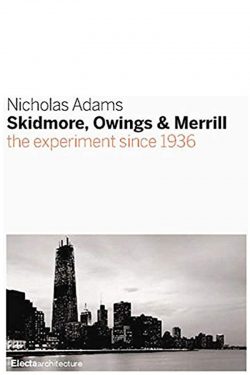This monograph surveys 30 of the most iconic buildings designed by Skidmore, Owings & Merrill (SOM), the legendary American architecture firm, since its founding in 1936. Along with such architects as Ludwig Mies van der Rohe and Le Corbusier, SOM is largely credited with propagating the Internationalist style of architecture that filled the New York skyline with such mid-century masterworks as Lever House (1952) and Chase Manhattan Plaza (1961). Before the current age of the super skyscraper, SOM designed what was for almost thirty years the world’s tallest building, Chicago’s Sears Tower (1973), as well as the city’s John Hancock Center (1970). With an essay by the American critic Nicholas Adams that contextualizes the importance of SOM’s contribution to the globalization of architecture – and its participation in less emphatically vertical structures, such as the Albright-Knox Art Gallery in Buffalo (1962) and the Hajj Terminal at King Abdul Aziz International Airport in Jeddah, Saudi Arabia (1981) – this title provides the first-ever independently authored overview on a firm that continues to make headlines to this day.
Nicholas Adams
Nicholas Adams is professor emeritus of architectural history at Vassar College, where he has taught since 1989. He is the author of several books, including Skidmore, Owings & Merrill: SOM since 1936, and serves on the editorial board of the Italian architectural magazine Casabella, to which he is also a frequent contributor.
